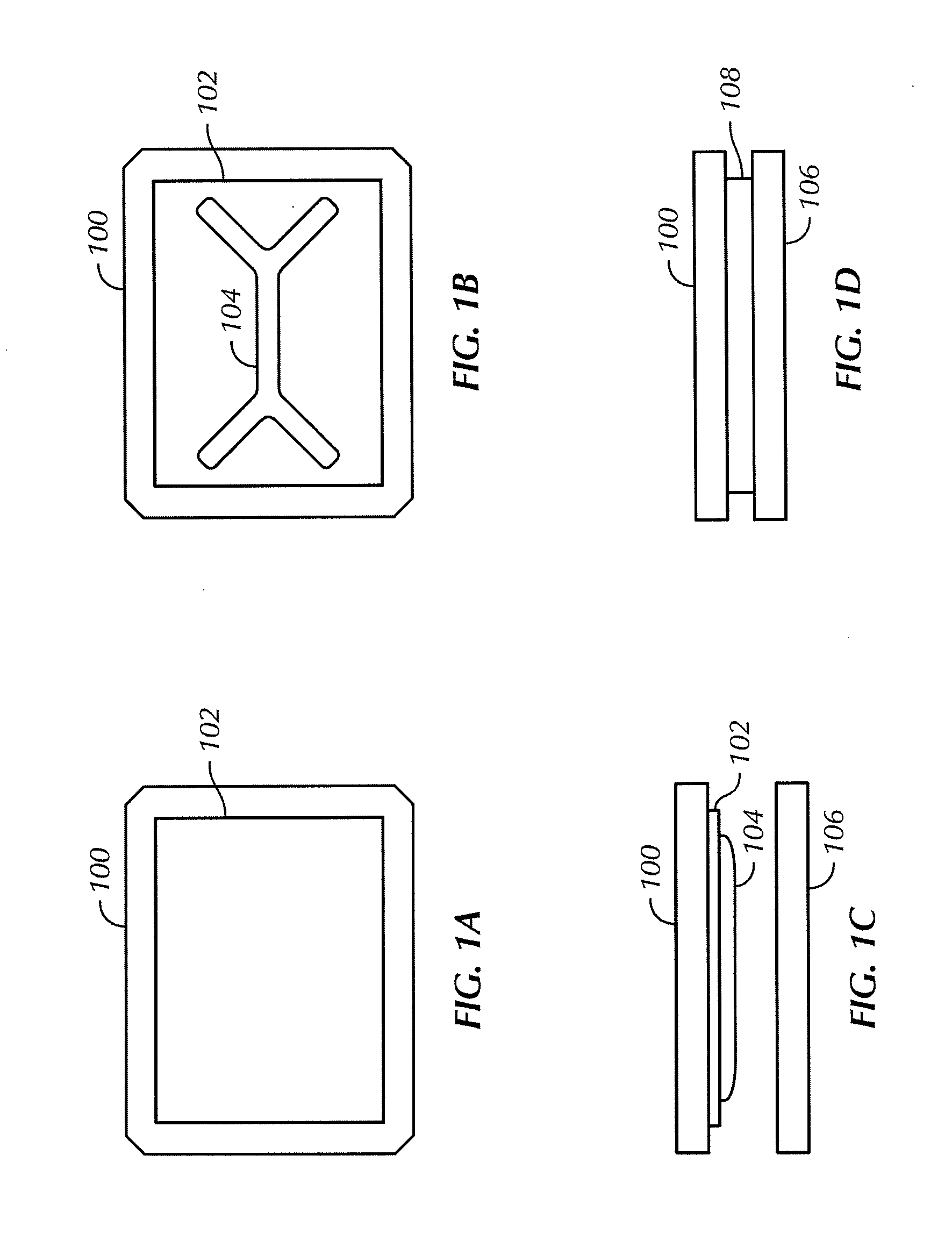Liquid adhesive lamination for precision adhesive control
a liquid adhesive and precision technology, applied in the field of substrates, can solve the problems of affecting the performance of the substrate device, affecting the adhesion, and affecting the adhesion, so as to achieve uniform adhesive coverage and thickness, and minimize the formation of voids
- Summary
- Abstract
- Description
- Claims
- Application Information
AI Technical Summary
Benefits of technology
Problems solved by technology
Method used
Image
Examples
Embodiment Construction
[0044]In the following description of embodiments, reference is made to the accompanying drawings which form a part hereof, and in which it is shown by way of illustration specific embodiments which can be practiced. It is to be understood that other embodiments can be used and structural changes can be made without departing from the scope of the disclosed embodiments.
[0045]Various embodiments relate to patterning liquid adhesive on a substrate in a pattern designed to minimize the formation of voids in the adhesive and to provide uniform adhesive coverage and thickness as the substrate is adhered to another substrate and / or electrical components. Liquid adhesive can be patterned on a substrate, and a second substrate can then be pressed onto the first. During this process the dispensed adhesive pattern can spread out into the final coverage area.
[0046]Precision liquid adhesive control can be obtained by first patterning liquid adhesive in a thin pre-coat layer on a substrate. The ...
PUM
| Property | Measurement | Unit |
|---|---|---|
| pressure | aaaaa | aaaaa |
| adhesive | aaaaa | aaaaa |
| electrical field | aaaaa | aaaaa |
Abstract
Description
Claims
Application Information
 Login to View More
Login to View More - R&D
- Intellectual Property
- Life Sciences
- Materials
- Tech Scout
- Unparalleled Data Quality
- Higher Quality Content
- 60% Fewer Hallucinations
Browse by: Latest US Patents, China's latest patents, Technical Efficacy Thesaurus, Application Domain, Technology Topic, Popular Technical Reports.
© 2025 PatSnap. All rights reserved.Legal|Privacy policy|Modern Slavery Act Transparency Statement|Sitemap|About US| Contact US: help@patsnap.com



